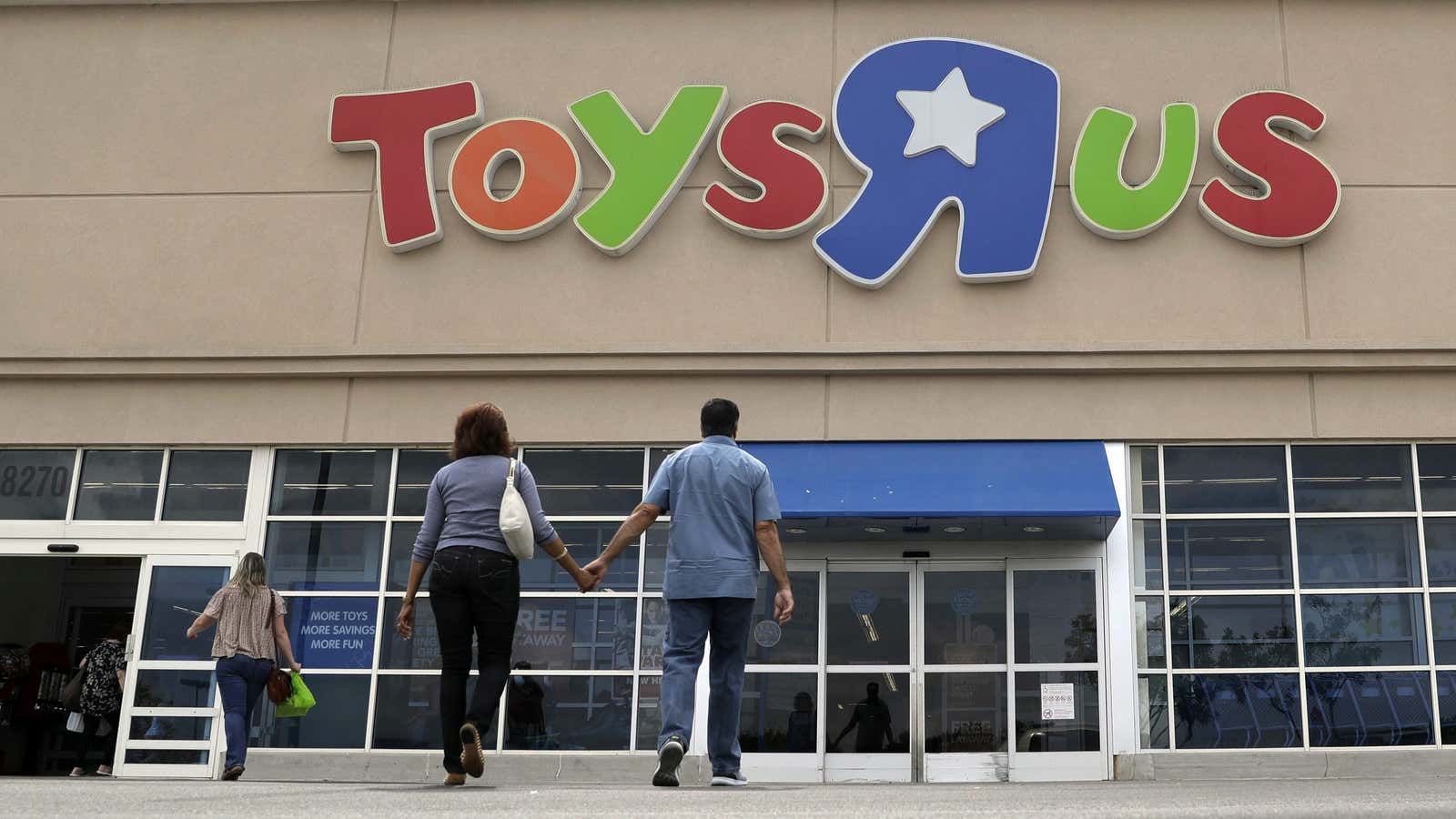It’s highly unlikely that, in the two weeks before Christmas, the executive team at Toys “R” Us can do much to goose the bankrupt company’s sales. The merchandise has been bought, the advertising circulars have been printed, the commercials filmed. The hard work of selling is now up to the front-line employees who, according to Glassdoor’s estimates, are making about $35,000 a year.
Yet it’s on behalf of just 17 senior executives that the company has successfully lobbied a US bankruptcy judge to approve as much as $21 million in bonuses, arguing that the executives need the incentive to get shoppers “to buy as much as they can.”
Where to start?
The goal of any retailer is to get shoppers to buy as much as they can. In poker parlance, those are table stakes, the bare minimum required to let you to play the game. If Toys “R” Us’s executives weren’t already spending their days trying to move merchandise, it has much deeper problems.
Indeed, it wasn’t a lack of selling that got Toys R Us into this mess, but the massive piles of debt its new owners loaded on the company when they took it private in a leveraged buyout in 2005. Toys ‘R’ Us has made $6 billion in interest payments since its buyout, including $910 million in 2016 and 2017, according to the Wall Street Journal. On top of that, its new owners have charged the company more than $100 million in “advisory services, transaction fees, and lease payments” over the last five years.
Of course, it isn’t easy being a brick-and-mortar retailer in the the e-commerce age, so it didn’t come as a surprise when Toys “R” Us, saddled with huge debts by its owners, declared bankruptcy in September. But the management team installed by its private equity owners—KKR, Bain Capital and Vornado Realty Trust—has now added insult to injury by insisting it be paid bonuses worth as much as $21 million to essentially do its job.
According to Reuters, Toys “R” Us CEO David Brandon and 16 other executives split the full $21 million if the retailer reaches a fiscal-year goal of $641 million in EBITDA, or earnings before interest, taxation and depreciation. If they fall short, but still hit at least $550 million in EBITDA for the year ending Jan. 31, they divvy up $14 million in bonus pay.
The company’s creditors approved the plan after some modifications, but Reuters reports that the US trustee, a federal watchdog, “blasted the proposal, saying five of the potential recipients split $8.2 million in retention bonuses a week before the Sept. 19 bankruptcy filing, and noted other salary perks for Brandon such as aircraft and limousine use.”
In an emailed statement, the company said “the plan received support from creditor and lender groups, and as previously stated, this type of plan is standard practice for a company involved in a restructuring.”
Notably, the target set for the executives bonus is based on fiscal-year earnings, not revenue, which means they can reach it through increasing sales—or by cutting costs. Labor is among the biggest expenses of any retailer. If the executives can’t make the bonus by selling toys, they have millions of dollars in incentives to reach it by closing stores and laying off employees.
